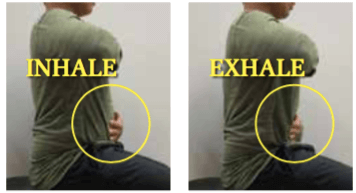Our fast-paced lifestyles have caused many of us to those the ability to use our main respiratory muscle, the large dome-shaped diagram, to breathe. Instead we use our shoulders, upper chest, neck, and back muscles, causing rapid, shallow breaths. Diaphragmatic breathing is beneficial for your physical and mental health as it reduces stress, lowers heart rate, and blood pressure. For those with pulmonary disease, such as COPD, the diaphragm often becomes weakened causing it to work less efficiently. A physical therapist experienced in pulmonary rehab can teach proper breathing to reduce anxiety, slow breathing rate, increase full oxygen exchange, and improve physical activity. Because part of the core is the diaphragm, in physical therapy, breathing is also essential to proper posture and core stability.
Diaphragmatic breathingis one of simplest things you can do to improve your overall health and well-being.
- Lie or sit, place one hand on the upper chest and the other below the rib cage.
- Breathe in slowly through the nose so the stomach moves out against your hand. The hand on your chest should remain still.
- Breathe out through pursed lips as you relax the diaphragm, letting it fall inward.
- Inhale for 4 seconds; exhale for 6; 10 times.






